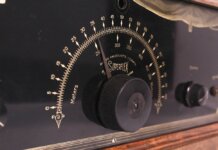
It’s hard enough to predict weather on Earth — imagine trying to predict the weather between here and the sun. Space weather is a real thing that affects Earthlings by interfering with global positioning systems, satellites, search-and-rescue operations and, more ominously, national defense.
A professor at the University of Alabama in Huntsville is the principal investigator on a NASA and National Science Foundation project to research the solar atmosphere and develop software models to predict space weather.
Dr. Nikolai Pogorelov is leading the $3.2 million, three-year effort to examine the physical and computational aspects of the solar atmosphere.
The team’s research will be useful to the U.S. Space Command, scheduled to relocate from Colorado to Huntsville in the next few years. Huntsville is also home to NASA’s Marshall Space Flight Center and more than 300 defense and aerospace contractors.
U.S. Space Command operated from 1985 to 2002 and was reactivated in 2019 to protect American interests focused on space above 60 miles as a warfighting domain. (It is not the same as Space Force, a distinct military service like the Army or Navy.)
Huntsville’s Redstone Arsenal emerged in January 2021 as the preferred destination for Space Command’s relocation from Colorado. Colorado officials have protested, but so far, the decision stands.
The Space Command enables satellite-based navigation and troop communication and provides warning of missile launches. The UAH research will be critical to short- and long-term responses to disturbances that might destroy satellite components, for example.
“The cutting-edge research being done by Dr. Pogorelov, and indeed many of the Center for Space Plasma and Aeronomic Research (CSPAR) and Department of Space Science researchers, is of immediate interest to the Space Force Command because it provides the kind of forecasting and predictive capabilities that are essential to the protection of our military and civilian space-based assets,” says UAH professor Dr. Gary Zank, head of CSPAR and the university’s Space Science Department.

Space weather — winds and magnetic waves that move through space — impacts Earth in the form of radio blackouts, solar radiation storms and geomagnetic storms caused by disturbances from the sun. Far from a hypothetical doomsday scenario, a massive geomagnetic solar storm caused the American Aerospace Defense Command to temporarily lose track of 1,600 space objects in 1989. Satellites tumbled out of control. The entire province of Quebec, Canada, lost power for 12 hours following the powerful explosion on the sun.
“Space weather predictions are probably as important as just regular weather predictions,” says Pogorelov. “If something strange occurs on the solar surface these can accelerate particles and ionizing radiation can actually affect humans.”
Because of potentially catastrophic implications to power grids, military surveillance, space defense and even simple cell phone and ATM transactions, space weather predictions are a national priority supported by both political parties.
“Space weather is being predicted on an everyday basis even now,” says Pogorelov. “It’s not like it’s something new.”
Establishment of Air Force Space Command headquarters in North Alabama is expected to bring more than 1,600 jobs. Results of the environmental impact analysis, which is needed before the relocation moves forward, are due in early 2023, the Associated Press reported.
“We strongly expect that we will be able to collaborate with them on operations,” Pogorelov says of the soon-to-be-local headquarters. “If we are successful, and I hope we will, we will be here and able to collaborate.”
Researchers won’t be able to “model” space weather, plasma flow and magnetic fields of radiation moving toward Earth like pointing to a big galaxy weather map. They could, though, create a set of simulations over the next two years of the research period and “introduce certain criteria, which would allow us to choose the best available solution,” Pogorelov says.

New software models that help predict when a coronal mass ejection might reach Earth within a specific range of error of plus or minus a few hours would be helpful in an operations environment, he explains.
“You could run the code and in real time provide these kind of predictions,” he says. “We will have a consistent set of models, which will be useful for operations.
“We want the team results to be not quantitatively but qualitatively better,” he says.
The National Science Foundation expects the groups to collaborate and publish results.
“When we finish our project, we will have publicly available software for performing space weather simulations studying from the solar surface to Earth and maybe further to other planets,” he says. Results will be available to the science community and other interested parties.
In creating these solar software models, Pogorelov’s research team was able to secure prized time on the Frontera supercomputer at the Texas Advanced Computing Center, as well as on various NASA computers.
Getting access to the world’s fastest academic supercomputer isn’t easy. Pogorelov says there is “a very hot competition to get time allocations on Frontera.
“Our team was one of the first teams that was provided access to Frontera and we used it pretty successfully,” he says. The importance of their research helped them get access, but “of course, our code has a pretty good reputation,” he says.
Besides UAH, the project team includes Lawrence Berkeley National Laboratory, Goddard Space Flight Center, Marshall Space Flight Center, and two private companies, Predictive Science Inc. and Space Systems Research Corp.
Pogorelov’s expertise is in computational fluid dynamics and magnetohydrodynamics with application to space physics and astrophysics. He has a doctorate from the Russian Academy of Sciences.
Perhaps surprising some, he left the University of California in 2008 to do research in Alabama. He was part of a group of researchers and students there who all found “pretty substantial” benefits by relocating to the Deep South.
“We decided, many of us led by Dr. Zank, to go to Huntsville because UAH was very welcoming for us,” he says. “UAH provided us with a better environment for our research than was in UC Riverside,” he says.
Research activities at the University of Alabama in Huntsville rank among the top federally funded programs in the United States, according to the National Science Foundation. UAH was 13th nationwide in NASA research expenditures and 26th in overall DOD research spending for 2019, the most current data available.
Deborah Storey is a Huntsville-based freelance contributor to Business Alabama.
This article appeared in the November 2021 issue of Business Alabama.



